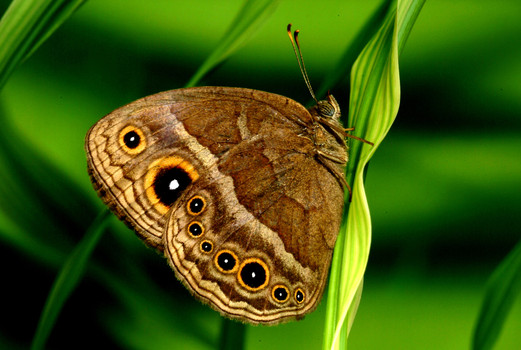The spots on some butterfly’s wings that look like an eye are targets for predators so the butterfly’s bodies are not injured by an attack. The spots change color according to season and the type of predator that is most active in the different seasons where the butterfly is found. A group of biologists from Oregon State University, Yale University and four other institutions led by Katy Prudic from Oregon State University reported the discovery in the edition of the journal Proceedings of the Royal Society B.
The researchers examined the “eyespots” on the wings of one species of butterfly called Bycyclus anyana. This butterfly produces five generations through the year and has a very distinctive row of spots of varying sizes along the bottom edge of its wings. The spots are targets for predators.
The researchers found that the color and pattern of the spots change with the seasons but that change is an adaptation to fend off the most predominant predator not because of temperature. During the wet season praying mantids are attracted to the large colorful spots that the butterflies display. In the dry season the spots change to a smaller size and less colorful pattern that is more attractive to birds. Most insect predators are dormant in the dry season.
The change in color and size of spots happens in this particular species of butterfly across a number of generations every year. The most reasonable assumption is that the majority of butterflies that display eyespots do so to prevent predation. This is the first proof that butterflies change colors and patterns of their wing spots to avoid death from predators.















